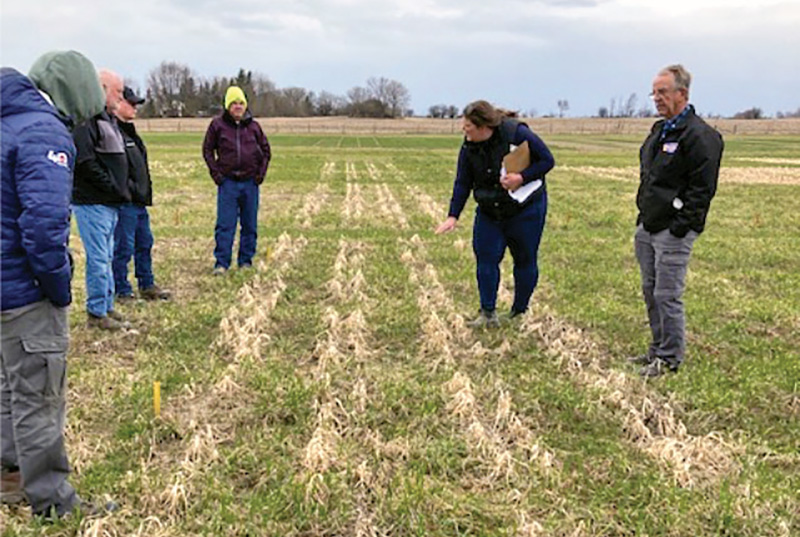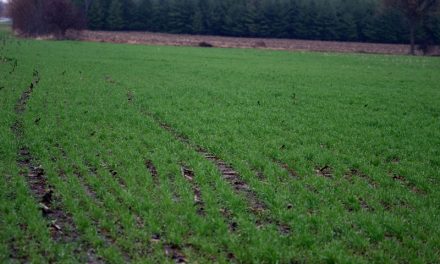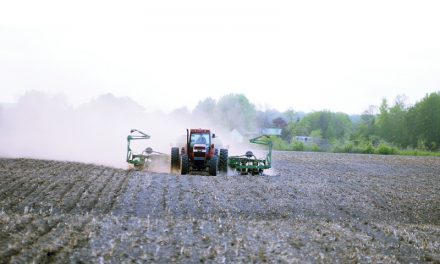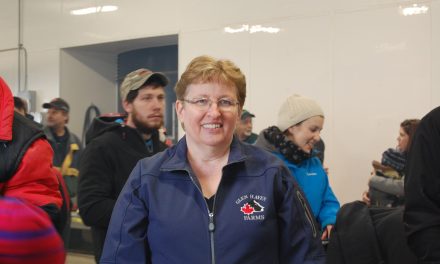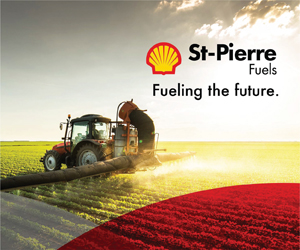This is twin row bio-strip till rows preparing for planting of the 2022 crop. Photo taken during the Bio-Strip Till Day at the Winchester Research Farm on April 21. Courtesy Photo
By Kelsey Banks, Agronomist
Kelseyabanks3@gmail.com
Cover crops, relay cropping, bio-strip till, strip till… there are many words to understand and figure out what they mean in agriculture – especially agronomy and soil health.
On Thurs., April 21, the Ontario Ministry of Agriculture, Food and Rural Affairs (OMAFRA) had one of their bio-strip till tours and education locations in Eastern Ontario. The tour was held in the morning at Warren Schneckenburger’s farm near Morrisburg, and then in the afternoon at the Winchester Research Farm and Jon Daly’s farm (Tara Farms Agri Services) located near Manotick.
One of the methods to increase your soil’s health is to reduce tillage. For some, they have found a way to make no-till the best method to grow good yielding and healthy crops. However, for some they are exploring different methods of tillage or other soil health practices to increase their soil’s health. Here are two other methods that are becoming more popular:
Bio-strip till
The main idea with bio-strips is that instead of using equipment to till the soil, you use specific cover crops to improve the crop-row environment. Similar to a basic cover crop system, this system puts specific cover crops in the row they plan to plant the following season. Radishes are typically one of the main cover crops used for in the crop-row as it can create its own row due to its growth. Bio-strips typically consist of an annual cover crop for the crop row, so it can die over winter and then in between the rows seed a biannual or perennial cover crop to protect the soil.
As the Extension Soil Health Specialist with North Dakota State University Dr. Abbey Wick says in her article with AgWeek “Using Bio-Strip Till After Harvest”, “Goals for using this approach typically include a combination of (1) creating a dark strip in the field with residue to simulate strip till, (2) opening up the soil for cash crop root growth, (3) to keep competitive winter annual species like cereal rye out of the cash crop planting row, and (4) residue management to keep problematic residue out of the planting strip.”
Strip-till
This is another form of tillage that does use equipment, but it sits somewhere between no-till and reduced tillage. It produces black, intensely tilled, narrow bands for planting row crops, while leaving undisturbed soil and crop residue between the strips. Also, it is a great way to place fertilizer that will be more available for the crop it will be planted to. This type of tillage is best suited for hard to plant into soils.
As most of us know, soil health has become a big and important topic. Not just within the agricultural industry, but within many businesses as well. We want to grow good crops and it starts from the ‘ground up.’
The plan is that OMAFRA will host another few days similar to this at the same locations throughout the growing season for those that would like to see the crop throughout the season.
For more information about bio-strip till management, strip-till management or the upcoming events, OMAFRA will be hosting, please contact your agronomist or local OMAFRA representative.

